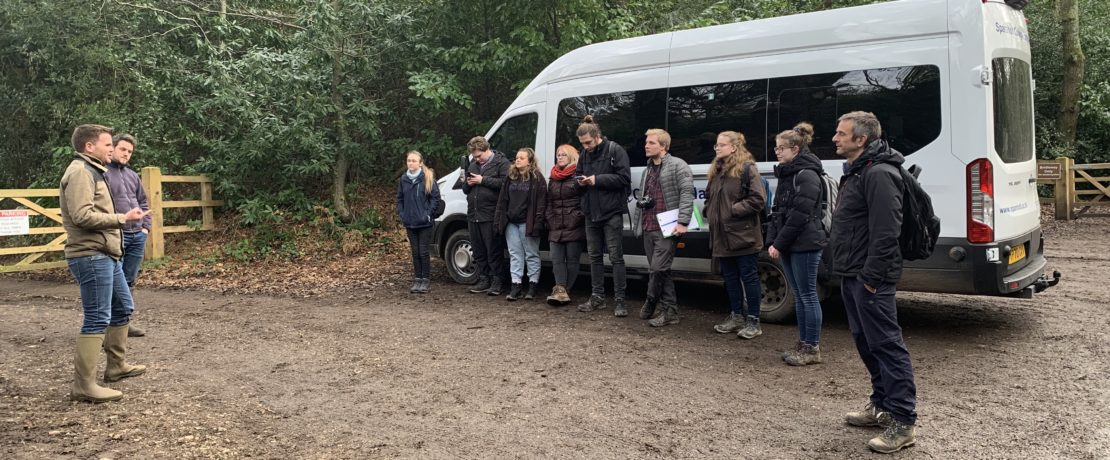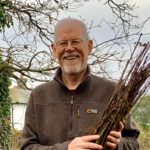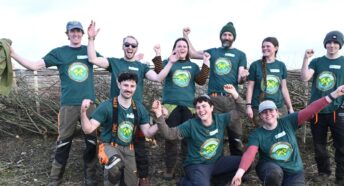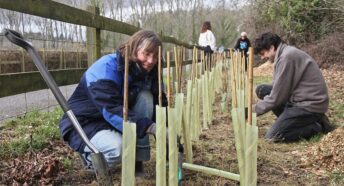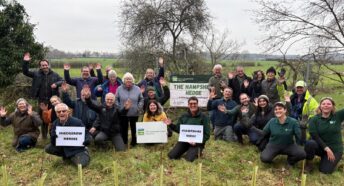CPRE Hampshire welcome University Centre Sparsholt students on hedgerow initiative visit
Boyd McCleary, CPRE Hampshire Hedgerow Heroes lead, tells us more
The visit was by nine final year Wildlife Ecology and Conservation students at University Centre Sparsholt, as a case study to develop their understanding of project management, project funding, stakeholder engagement and communication. It was also an opportunity to apply their knowledge of hedgerow ecology, biodiversity and carbon sequestration.
The students were interested in understanding the rationale for the Meyrick Estate deciding to convert the land in question from arable to horse paddocks and the benefits in this context of planting new hedgerows and gapping up existing hedgerows. They were fascinated to hear that the estate had used old maps to identify the lines where old hedgerows had previously stood. It was along these lines that the new hedges were planted. The old hedgerows had been ripped out 20-30 years ago, when that made sense from the perspective of making arable farming more efficient. But, with the decision to leave the EU and the withdrawal of EU farming subsidies, the farming of arable crops no longer made sense on this land.
View video of University Centre Sparsholt student reflecting on visit.
He notes the importance to the estate of the land being managed with conservation in mind and comments that hedgerows now stand where agriculture previously dominated the landscape.
The students were also interested to hear about the role that CPRE Hampshire had played, working with the estate, to secure a grant from CPRE National Office to plant the new hedges. These hedges produce multiple benefits:
- a richer habitat for wildlife, which in turn leads to greater biodiversity
- improvement in soil quality and reduction in the risk of erosion
- flood mitigation
- enhanced storage of carbon in the hedges, both above and below ground.
View another University Centre Sparsholt student explaining what they learnt.
She describes how impressed she was by the project, in particular by the enhanced carbon sequestration opportunities that have been created by the planting of new hedges. The student was also interested to note that the decision had been taken not to use plastic guards on the young hedge whips, as these are non-biodegradable and are unlikely to be removed.
University Centre Sparsholt lecturer Dr Matthew Tallis explains: “The aspects of the project associated with engaging multiple diverse stakeholders, funding stress and income generation opportunities at the site were eye-opening for the students. It was wonderful to hear how such a project was established, and to see how it is developing. It was fascinating for the students to experience, first-hand, the range of targets and milestones you must deliver, due to funder requirements. Also, the importance of maintaining positive local community engagement, within the landowner and project management team’s vision, and the activities to help with this. Then, the ecology, to see and hear the benefits for biodiversity and carbon sequestration from this income generating hedgerow planting.”
To find out more about the University Centre Sparsholt, visit:
Facebook: @UniCentreSparsholt
Twitter: @UC_Sparsholt
Instagram/ Instagram stories: @uc_sparsholt
